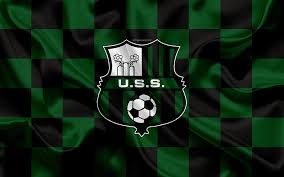
The Rich History of Atlético Madrid Club
The Atlético Madrid Club is not just a football club; it’s a cultural phenomenon that intertwines with the very essence of Spanish football. Founded in 1903, the club has grown from its humble beginnings into one of the most prominent and successful teams in Europe. With a passionate fanbase, historic rivalries, and a commitment to excellence, Atlético Madrid Club stands as a testament to the spirit and resilience of the sport.
History of Atlético Madrid Club
The history of the Atlético Madrid Club is rich and layered, akin to the tapestry of Spanish football itself. Originating in the early 20th century, the club’s formation was a direct result of the influence of Basque students residing in the Spanish capital. Over the years, it has evolved through various phases, each marking significant milestones and transformations in both its identity and success on the pitch.
Early Beginnings: Foundation and Growth
Founded in 1903 by three brothers who were studying in Madrid, Atlético Madrid Club began as a small offshoot of Athletic Bilbao, intending to provide a team for the local students. Initially named Athletic Club de Madrid, the club quickly gained traction among fans and started participating in regional competitions.
As the years progressed, Atlético Madrid Club became synonymous with athletic excellence. Not only did the club aim for success on the pitch, but it also sought to cultivate a strong sense of community among its supporters. The establishment of a home ground—Estadio Metropolitano—in 1923 marked a significant milestone, allowing fans to rally behind their club in a dedicated venue.
The Golden Era: 1940s and 1950s
The post-war period heralded a golden era for the Atlético Madrid Club. Under the management of Ricardo Zamora, the team showcased remarkable talent and tactical prowess, securing multiple La Liga titles, including their first in 1940. This period saw the emergence of legendary players who would define the club’s legacy, such as forward Francisco Gento and goalkeeper Antonio Betancort.
With an aggressive playing style and a penchant for thrilling matches, Atlético Madrid Club captured the hearts of fans nationwide. Their impressive performances laid the groundwork for a solid fanbase that continues to thrive today.
Challenges and Resurgence: The Late 20th Century
Despite its achievements, the late 20th century proved to be a challenging time for Atlético Madrid Club. Financial difficulties plagued the organization, prompting changes in ownership and management. However, surviving these hardships strengthened the resolve within the club.
In the 1990s, a resurgence began with the reinvigoration of youth academies and strategic signings that aimed to restore the team’s former glory. The appointment of coach Luis Aragonés brought stability and vision, leading to the club’s eventual return to prominence.
Key Players of Atlético Madrid Club
Throughout its illustrious history, Atlético Madrid Club has been graced by numerous key players whose talents and contributions have left indelible marks on the club. These players are not only celebrated for their on-field abilities but also for their leadership and commitment to the Atlético ethos.
Legendary Icons That Shaped the Club
One cannot delve into the history of Atlético Madrid Club without mentioning the likes of Fernando Torres and Diego Forlán.
Fernando Torres, often referred to as “El Niño,” rose through the youth ranks of Atlético Madrid and established himself as a formidable striker. His incredible pace, technical skills, and keen eye for goal made him a fan favorite. After leaving for Liverpool, Torres returned to his boyhood club later in his career, symbolizing the unbreakable bond that exists between the player and the club.
Diego Forlán, another iconic figure, played a pivotal role during his tenure with Atlético Madrid Club. His exceptional goal-scoring ability and dedication secured him the Pichichi Trophy, awarded to the top scorer in La Liga. Forlán’s success not only bolstered the team’s attacking prowess but also showcased the depth of talent present at the club.
Rising Stars of the Modern Era
As the game evolves, so too does the roster of stars at Atlético Madrid Club. Modern players like Antoine Griezmann and João Félix have injected new energy into the squad. Griezmann’s flair and creativity have made him a vital component of the team’s setup since he joined in 2014. His chemistry with teammates plays a crucial role in Atlético’s attacking strategies.
On the other hand, young prodigy João Félix represents the future of the club. Despite his age, his skill set and maturity on the ball have drawn comparisons to some of the world’s best. As another talented player emerging from the Atlético Madrid Club, Félix embodies the club’s commitment to nurturing young talent within its ranks.
The Importance of Leadership
Beyond individual talents, leadership has been an essential aspect of the Atlético Madrid Club’s success. Figures like team captain Koke bring not only skill but also experience and motivation, fostering a winning mentality throughout the squad. He serves as a bridge between generations of players, instilling the values and traditions of the club while pushing towards future successes.



